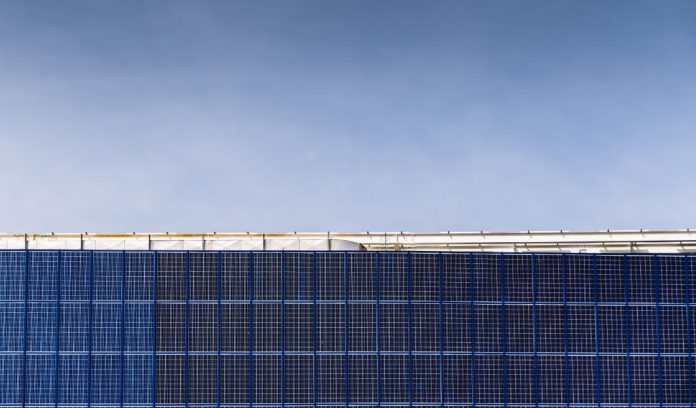Solar windows have emerged as a game-changer in the realm of highly glazed skyscrapers, offering the potential to significantly enhance energy efficiency and reduce carbon emissions by up to 40%, according to research published in One Earth.
Conventional wisdom might suggest that energy-efficient buildings are typically not characterized by excessive glazing or towering heights. However, a team of researchers from the National Renewable Energy Laboratory (NREL) has challenged this notion. Led by scientist Lance Wheeler, who specializes in integrating photovoltaic (PV) technology into windows, they have demonstrated that innovative building designs can yield high efficiency even in skyscrapers.
The breakthrough was facilitated by an open-source software called PVWindow, developed by twin brothers Lance and Vincent Wheeler, which is accessible on GitHub. The software was used to model the impact of photovoltaic windows on building energy consumption. Their research report, funded by the Department of Energy, was co-authored with NREL scientists Janghyun Kim, Tom Daligault, Bryan Rosales, Chaiwat Engtrakul, and Robert Tenet.
The report delineates specific building design principles that can result in structures with net-zero or even net-positive energy consumption. Such innovations are crucial as buildings account for over one-third of global energy consumption and a significant portion of carbon emissions.
Modern skyscrapers tend to feature a high window-to-wall ratio. For instance, the Equitable Building in New York, constructed in 1915, boasts a 25% window-to-wall ratio, while the Bank of America Tower, completed in 2016, takes this to an impressive 71%. To demonstrate the impact of glazing on energy performance, the researchers modeled a window-to-wall ratio of 95%. They also found that the use of triple-paned windows is highly effective in reducing energy consumption, a practice not yet widely adopted.
One of the challenges faced by windowed skyscrapers is the substantial cost associated with cooling, as large amounts of light and heat penetrate the glass façades. Solar windows, however, offer a dual benefit: they provide thermal insulation and harness absorbed energy to generate electricity. PVWindow simulations conducted in Denver revealed that on-site solar generation could halve the average daily electricity demand for a 12-story highly glazed building, averting the emission of 2 million kilograms of carbon dioxide annually.
Lance Wheeler illustrated the potential of this technology by envisioning New York City’s skyline, dominated by glass-clad high-rise buildings. The Freedom Tower alone, with its extensive glass surface area, could effectively function as a power plant.
Notably, Ubiquitous Energy, a commercial windows manufacturer specializing in building-integrated photovoltaics (BIPV), secured a significant $30 million in Series B funding in January. With more than 20 billion square feet of windows installed annually, there is a substantial market opportunity for companies like Ubiquitous Energy to integrate their technology and further transform the industry.







